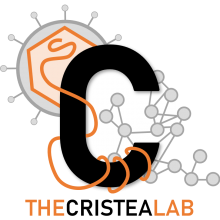The number of alphaherpesvirus particles infecting axons and the axonal protein repertoire determines the outcome of neuronal infection
Type
UNLABELLED: Infection by alphaherpesviruses invariably results in invasion of the peripheral nervous system (PNS) and establishment of either a latent or productive infection. Infection begins with long-distance retrograde transport of viral capsids and tegument proteins in axons toward the neuronal nuclei. Initial steps of axonal entry, retrograde transport, and replication in neuronal nuclei are poorly understood. To better understand how the mode of infection in the PNS is determined, we utilized a compartmented neuron culturing system where distal axons of PNS neurons are physically separated from cell bodies. We infected isolated axons with fluorescent-protein-tagged pseudorabies virus (PRV) particles and monitored viral entry and transport in axons and replication in cell bodies during low and high multiplicities of infection (MOIs of 0.01 to 100). We found a threshold for efficient retrograde transport in axons between MOIs of 1 and 10 and a threshold for productive infection in the neuronal cell bodies between MOIs of 1 and 0.1. Below an MOI of 0.1, the viral genomes that moved to neuronal nuclei were silenced. These genomes can be reactivated after superinfection by a nonreplicating virus, but not by a replicating virus. We further showed that viral particles at high-MOI infections compete for axonal proteins and that this competition determines the number of viral particles reaching the nuclei. Using mass spectrometry, we identified axonal proteins that are differentially regulated by PRV infection. Our results demonstrate the impact of the multiplicity of infection and the axonal milieu on the establishment of neuronal infection initiated from axons. IMPORTANCE: Alphaherpesvirus genomes may remain silent in peripheral nervous system (PNS) neurons for the lives of their hosts. These genomes occasionally reactivate to produce infectious virus that can reinfect peripheral tissues and spread to other hosts. Here, we use a neuronal culture system to investigate the outcome of axonal infection using different numbers of viral particles and coinfection assays. We found that the dynamics of viral entry, transport, and replication change dramatically depending on the number of virus particles that infect axons. We demonstrate that viral genomes are silenced when the infecting particle number is low and that these genomes can be reactivated by superinfection with UV-inactivated virus, but not with replicating virus. We further show that viral invasion rapidly changes the profiles of axonal proteins and that some of these axonal proteins are rate limiting for efficient infection. Our study provides new insights into the establishment of silent versus productive alphaherpesvirus infections in the PNS.

